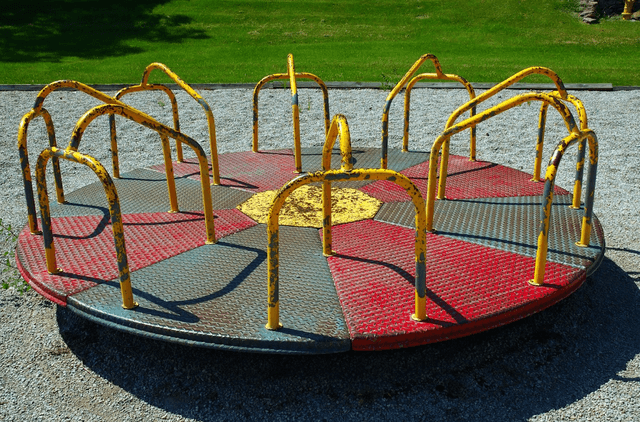Errata
Errors in The Anxious Generation
By: Jon Haidt and Zach Rausch
June 8, 2024

We were very careful in our scholarship. We double- and triple-checked academic references, quotes, stories about young people who struggle due to social media, and anything else we could find.
Nonetheless, nobody and nothing is perfect. On this page, we present factual errors that were made in the book.
We also include a postscript which includes statements that we would like to modify based on knowledge gained after the book's publication in March 2024.
1) True Mistakes
1.1. p. 4: Percent of pre-teens on Instagram.
I (Jon) originally wrote that "40% of American children under 13 have created Instagram accounts." However, after reviewing the cited sources, I am correcting the statement to specify that 40% of children aged 9–12 are using Instagram daily. This revised statistic more accurately reflects the findings in the Thorn & Benenson Strategy Group (2021) and Canales (2021).
1.2. p. 104 Legal Age of Buying Alcohol
On page 104, I (Jon) wrote,
“Those of us who grew up in the analog world of 20th-century America can remember a time when there were three nationally recognized age transitions that granted greater freedom and called for greater maturity.”
One of these age transitions was 18. I wrote:
“At 18 you were considered an adult. You could legally enter a bar or buy alcohol in a liquor store. You could buy cigarettes in most states (although that varied). You could vote, and if you were male, you had to register for potential military service. Also, high school graduation occurs around age 18, and that was the end of formal education for many people. After high school, graduates were expected to get a job or head off to college. In either case, there would be a major break with childhood and a big step toward adulthood.” [bold added]
In July of 2025, Michael Ailon contacted our team regarding the sentence “You could legally enter a bar or buy alcohol in a liquor store,” writing
It's unclear exactly what period is being referred to, but this has almost never been true. Other than a window in the early 1970s in some states, the legal drinking age has been 21 in the USA. In 1984, the drinking age was set at 21 by federal law in all states, and though it took a few states a little while to comply, the drinking age has been 21 for pretty much the last 40 years in the entire USA. The statement that 18 is the legal age to drink is used to justify that 18 is a "nationally recognized" age transition, similar to age 13 because that's when you could go to PG-13 movies by yourself. But the PG-13 rating wasn't introduced until 1984, so there never really was a time when there were both PG-13 movies and an 18 year old drinking age. Thus, the statement is incorrect in the context used. Of course, the point is still valid even if that detail is incorrect. 18 has certainly for a long time been a big age transition for many reasons (and many 18 year olds do drink), but it isn't because that was the legal drinking age.
Michael is correct. Even before the National Minimum Drinking Act, the drinking age varied heavily between states and wasn’t 18 in most places. The sentence “You could legally enter a bar or buy alcohol in a liquor store” should be revised and will be adjusted in the forthcoming versions of the book. (I (Jon) just happened to reach 18 during the period in which many states had lowered the age to 18.)
1.3. p. 183: Hospitalizations for Unintentional Injuries.
On page 183, Jon includes a figure titled “Hospital Admissions for Unintentional Injuries.”
In July 2025, Byron Ailon contacted us to point out that the rates shown were too high to reflect hospitalizations alone and likely represented emergency department visits.
Byron is correct. We mistakenly labeled the data as hospitalizations, when in fact it reflects a composite of emergency department cases — including visits that were treated and released, transferred, hospitalized, or otherwise not clearly resolved (e.g., left against medical advice or unknown disposition). The title of the graph will be corrected in future editions of the book.
1.4. p. 232: Snap Streaks.
On page 232, I (Jon) wrote that “Features like Snapchat “streaks” gamify social interaction by encouraging users to send a picture to their friends every day, in order to not break a publicly visible streak.”
In March of 2025, Snap’s Trust & Safety team informed us that “streaks” are only visible to the friends in the streak—it is not publicly visible. This was an error and we will adjust the text when making modifications for the next edition of the book.
1.4. p. 236: The Louisiana pornography law.
I (Jon) said that a 2023 law “required sites whose content is more than one-third pornographic to verify that visitors were over 18, using the state’s digital wallet app to present their Louisiana driver’s license.” Soon after publication, Rep. Laurie Schlegel contacted me to tell me that I was wrong about what the law required. Here is the relevant part of her email:
Your book states that Louisiana's law, in 2023, required users to upload their driver’s licenses, leading to Pornhub blocking access for Louisiana residents. This is not quite accurate. While the law became effective Jan 2023, it passed in 2022 and allowed for multiple methods of age verification. One method to verify a user’s age, which Pornhub decided to utilize, was the LA wallet app. LA Wallet is a third-party system that verifies age without storing personal data or requiring direct upload of identification to the website. It does not send any identifying information to the websites; just the course age that the user is over 18, thus protecting people’s privacy and identity. Our system more closely aligns with the model you advocated for as a preferred method instead of one to be discouraged.
This approach has not only been effective in our state but also respects user privacy and minimizes data exposure, differing significantly from the direct upload of identification to a site you mentioned. In addition, because of this option in Louisiana, Pornhub decided to comply with our age verification laws and not block access to their site in Louisiana. I think we are one of the only age verification states where they have not pulled out of and instead decided to comply with our law.
This is very exciting. Louisiana actually did allow for multiple verification methods, using third-party (non-government) methods, and it seems to be working! I’ll update the text of the ebook and book over the next few months. For a review of the law and what it requires, see here.
2) Postscript
2.1 p. 128, About the Brain Drain study
On page 128, Jon states,
“But even when students don’t check their phones, the mere presence of a phone damages their ability to think. In one study, researchers brought college students into the lab and randomly assigned them to (1) leave their bag and phone out in the entry room of the lab, (2) keep their phone with them in their pocket or bag, or (3) put their phone on their desk next to them. They then had the students complete tasks that tested their fluid intelligence and working memory capacity, such as by solving math problems while also remembering a string of letters. They found that performance was best when phones were left in the other room, and worst when phones were visible, with pocketed phones in between. The effect was bigger for heavy users. The article was titled “Brain Drain: The Mere Presence of One’s Own Smartphone Reduces Available Cognitive Capacity.” When adolescents have continuous access to a smartphone at that developmentally sensitive age, it may interfere with their maturing ability to focus.
We thank Reuben Arslan for calling attention to a meta-analysis that contradicted this claim.
A large meta-analysis was published in Technology, Mind, and Behavior in January 2024, analyzing 33 studies (166 effect sizes, N = 4368) that involved manipulating the presence of smartphones (smartphones had to be visually present in the smartphone-presence condition).
The authors of the study conclude:
It was found that the mere presence of smartphone had no significant effect on cognitive outcomes (d = −0.02, SE = 0.02, 95% CI [−0.06, 0.01], p = .246). Further, the effect of mere presence of smartphone was not moderated by demographics, trait smartphone dependency, or various methods for manipulating smartphone presence and assessing cognitive outcomes.
An important additional note from the authors:
Our findings suggest that it is still premature to support that a complete isolation from smartphones could improve academic and work productivity. While the distracting effect of smartphones’ notifications has been well documented, there is little evidence that the mere presence of smartphones affects cognitive processing.
The evidence indicates that my initial claim—that merely having access to a smartphone would negatively impact cognitive performance—may be incorrect. However, the authors of the study clarify that their findings do not establish that having a smartphone in a classroom is beneficial, neutral, or detrimental. They simply demonstrate that the existing studies, taken together, do not show clear evidence that the mere presence of a smartphone disrupts cognition.
We will adjust the text when we make modifications for the next edition.


